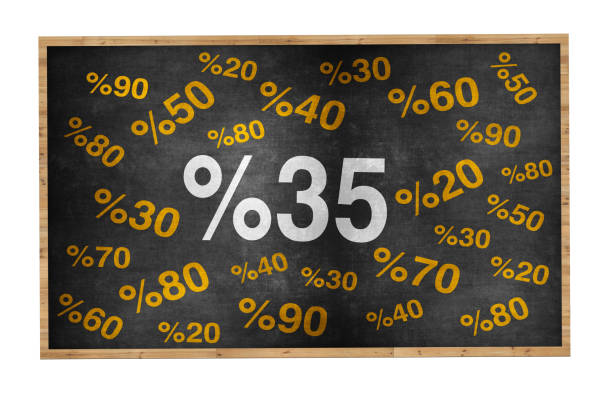You stumble across fractions, percentages, rates daily – often without realizing it. Curious about what percent 38/50 as a percent is? Need to quickly grasp scores, find deals, or make sense of figures? This explains how it functions – also, the reasoning behind its success.
Step 1: What Does “38/50 as a Percent” Mean?
To figure out 38/50 as a percent, imagine scaling it up. If 50 became 100, what would 38 become? Since percentages show amounts based on 100, finding that new number reveals the percentage.
Think of it this way: if you have 38 pieces out of a possible 50, figuring out the percentage tells you how many pieces you’d have if there were 100 total. Essentially, it displays your share relative to a whole.
Step 2: The Formula for Converting Fractions to Percentages
Want to know what a fraction looks like as a percentage? This is usually how it goes:
Figure out a percentage? Split one value by another, subsequently times that result by one hundred
There are 38 upstairs, also 50 down below. Now we’ll work with these numbers
First, get a decimal by dividing thirty-eight into fifty. Afterward, turn that into a percent by multiplying by one hundred
Divide thirty-eight by fifty – you get just over seven tenths.
To get the percentage, multiply 0.76 by 100
0.76 The result? Seventy-six points from a possible one hundred
Almost four out of five – that’s what thirty-eight from a total of fifty amounts to.
Thirty-eight out of fifty? That’s like saying things went well about seven times out of ten – or, looking at it another way, 76 percent succeeded.
Step 3: Understanding What 76% Represents

You’ve got a bag of fifty candies; thirty-eight happen to be chocolate. Figure that as seventy-six out of one hundred – a way to see how much of something relates to the complete amount, spanning zero to full capacity.
For example:
- A student nailing 38/50 as a percent questions translates to a grade of 76%.
- Completing 38 out of 50 tasks works out to 76%.
- Getting 38 out of 50 on something works out to be three-quarters correct.
Numbers shown as parts of one hundred give you a quick idea of progress – how close to done something is, or just how things compare.
Step 4: Visualizing 38/50 as a Percent
Imagine a puzzle broken down into fifty parts. Should thirty-eight be colored, that means three-quarters of the work is done – a visual reminder to grasp how far along you are.
Nearly everything is darkened – more than three-fourths, around seventy-six percent. It’s close enough to say three-quarters are covered.
Nearly four-fifths complete – that’s what 38/50 as a percent means. It feels almost done.
Step 5: Real-World Examples of 38/50 as a Percent
Think about percentages – when do they really show up? Like, say you’re marking work. Seventy-six percent done feels pretty good, doesn’t it? A squad snagging victories in three out of four contests – it happens surprisingly frequently
- You got 38 points from a possible 50 on the test – a solid 76%. Not bad at all.
- They closed 38 deals, though hoped for 50. That’s 76% of their goal – pretty good, actually.
- He made 38 shots from 50 attempts – that’s three out of four, pretty remarkable. Each toss seemed to find its way into the net.
- Almost finished! You’ve completed 38 workouts out of 50 – that’s like reaching the finish line three out of four times through.
- Most people – around 76%, meaning 38/50 as a percent – had a favorable view of the service they received.
Want to know what 38 from 50 looks like in percent terms? Knowing this helps understand progress, current position, or if improvement is happening.
Step 6: Comparing 38/50 to Other Fractions
Figuring out that 38/50 as a percent translates into a percentage gives you perspective; it shows where things stand when measured beside similar shares.
For instance:
- Getting to 25 – half of 50 – puts you squarely in the middle
- Getting four things right from five tries works out to eighty percent – not bad, but there’s room to do better
- You scored 76/100 – so close to 80 percent!
Most programs performed admirably, yet gains are still within reach.
Comparing results – grades, work progress, even personal goals – offers a clear perspective.
Step 7: How to Calculate Similar Fractions
So, converting 38/50 as a percent to a percentage clicked? Awesome – that exact process applies to any fraction you run into.
For example:
To figure out what portion 45 is of 60, divide 45 by 60. Then multiply that answer by 100 to get a percentage.
To turn 12/20 into a percentage, figure out what you get when dividing 12 by 20 – this yields a decimal. Then, enlarge that result by a factor of one hundred.
Want to change a fraction to a percentage? It isn’t hard – once you know how, it comes up frequently.
Step 8: Quick Tip for Mental Math
Want to swiftly calculate percentages? Discover the value representing fifty per cent, then double it – you’ve got your percentage figured out.
Want to know what portion 38/50 as a percent? Multiply 38 by 2
Close to 38% of the time, when you double a number, it lands around 76
Want quick percentages from fifty? Forget calculating – just halve the number. That’s your answer.
Step 9: Why Learning Percentage Conversion Matters
Figuring out percentages – say, what 38 from 50 represents, or similar calculations – proves useful surprisingly frequently
- See your grades instantly. Scores delivered simply.
- Figure out what impacts loan rates, levies, then markdowns.
- Notice your progress – observe how much you’ve achieved.
- Look over what you discovered, subsequently share it in a straightforward way.
Folks readily understand information presented as percentages. Instead of saying “38 out of 50,” stating “76 percent” offers immediate clarity for everyone.
Final Thoughts
Want to know what portion 38 is of 50? Here’s how:
We found 38 as a portion of 50 – it turns out to be 76%. We did this by splitting 38 from 50, subsequently scaling up the result times one hundred
Numbers shown as percentages give a fast sense of progress – whether it’s grades, job performance, or anything else. Consequently, they make results simple to understand alongside each other, regardless of the subject.
Consider 38 successes from 50 attempts – a testament to effort. It isn’t just a number; it reflects accomplishments, outcomes, achievements. Expressed as a percentage, that becomes 76%, highlighting advancement towards significant objectives!


